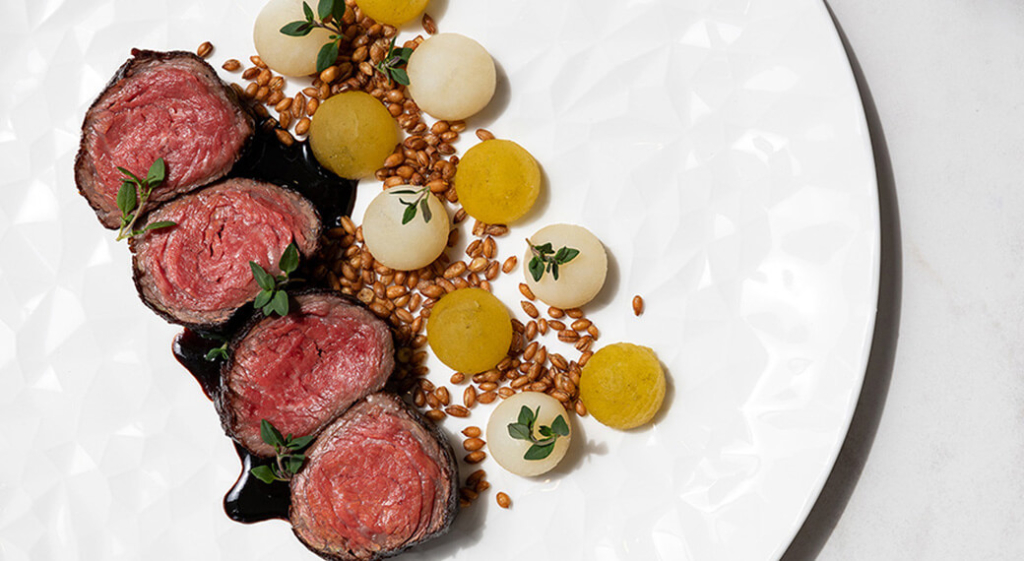Beyond a simple backdrop, the color and shape of white plates significantly influence our perception of food. In this article, we examine the many faces of a white plate: how they interact with different food colors and textures and how changing the shape of a white plate impacts customer perception.
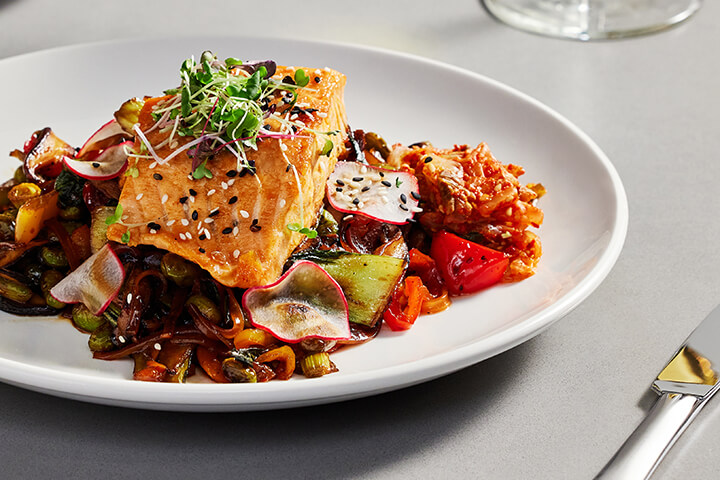
The Classic White Plate
White plates may seem like simple backdrops, but they play a surprising role in how we experience food. Next, we explore the fascinating interaction between white plates and food, examining how they influence our visual perception of color, texture, and even portion size.
White Plates Increase the Visual Intensity of Brightly Colored Food
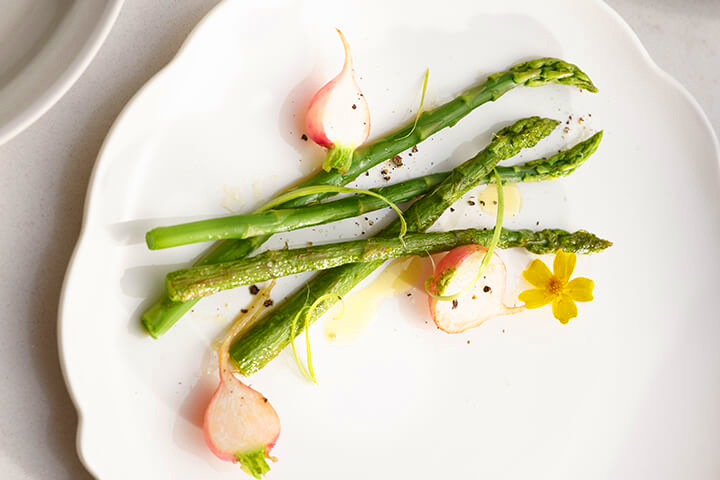
The way white plates interact with food depends on the color palette and texture of each dish. For bright and colorful foods like jewel-toned vegetables, a white background creates a high-contrast environment, making the colors of the food pop and appear more saturated and visually exciting.
White Plates Add Visual Interest to Muted Colors
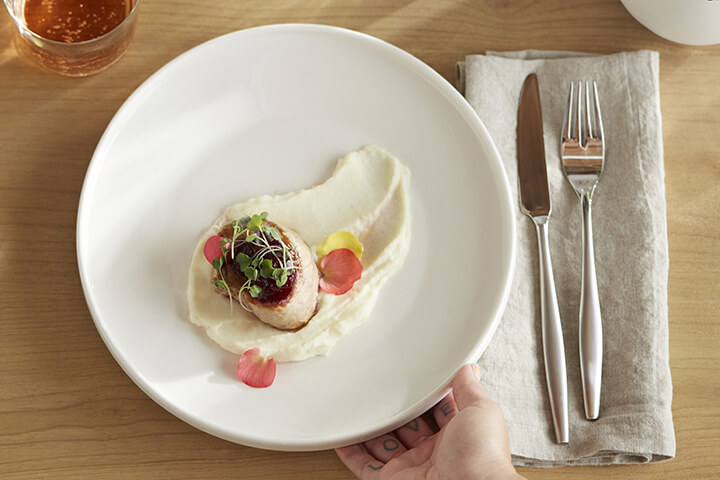
Dishes featuring muted or monochromatic palettes, like a cauliflower puree or brown curry, benefit from a white canvas because they appear more elegant and upscale. However, even with minimalist presentations, the food may appear too bland. Simple garnishes like herbs or a lemon wedge easily remedy that issue and tie the dish together.
Other earth-toned items like beige pastries appear brighter while altering their visual weight to appear lighter. Studies have also shown that round white plates enhance the perceived sweetness of food. This effect is likely due to learned associations. For example, white is often linked to purity, cleanliness, and freshness, qualities that can subconsciously translate to a perception of increased sweetness.
White Plates as a Balancing Act
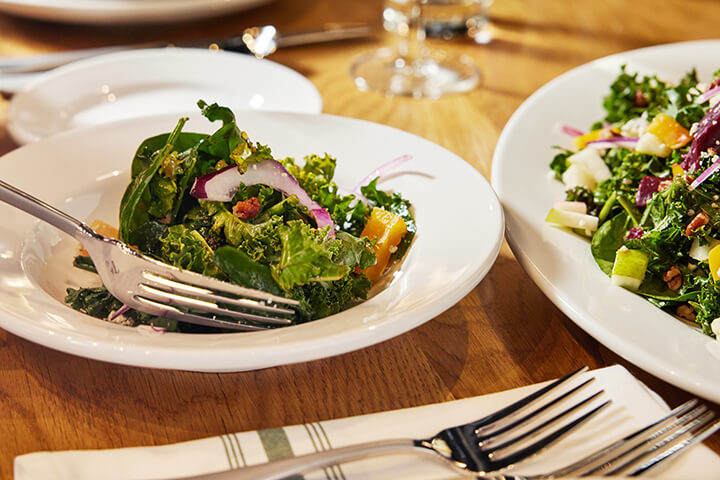
White plates also act as a stabilizer. When plating involves multiple colorful elements, the white plate allows for balance. It prevents color overload, ensuring all components remain distinct and visually appealing.
Contrast, Visual Weight, & the Delboeuf Illusion
White plates, depending on their shape, also create the illusion of smaller portions because our perception of portion size relies heavily on contrast. Food with high color saturation, like vibrant vegetables or rich sauces, stands out more against a white background. This creates a distinct border between the food and the plate, making the food appear visually smaller. Conversely, on a colorful plate, the food might visually “bleed” into the background, leading to a perception of a larger portion.
The well-documented Delboeuf optical illusion plays a role here. Imagine two circles of equal size, one placed on a white plate and the other on a black plate. The circle on the white plate will likely appear smaller. This is because our brains perceive a filled area (the white plate) as larger than an empty one (the black plate with the circle). Similarly, a white plate creates a larger “empty” canvas, making a portion of food seem comparatively smaller.
How Shape & Texture Change Our Perceptions of a White Plate
The shape of a white plate also impacts our guests’ dining experience and perception of their meal.
Round White Plates
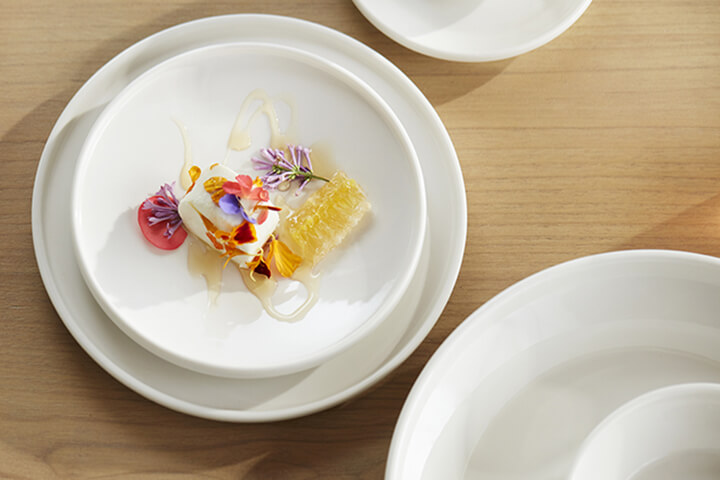
The classic white round plate remains the most popular choice for a number of reasons. First, they evoke a sense of comfort. Round plates are a familiar and expected shape in formal dining settings.
Circular plates also create a feeling of balance and unity, particularly when paired with round or oval-shaped food. For familiar dishes or desserts, round plates create a sense of approachability and can encourage diners to savor the classics.
Lastly, white round plates also make food seem more intense in flavor. The high contrast between the plate and the food draws the eye inward, focusing attention on the details and increasing the perceived sensory impact.
Oval White Plates
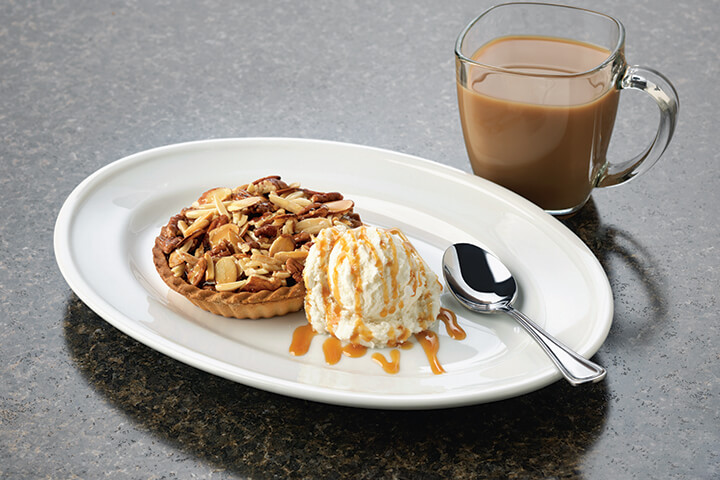
The round plate’s oblong cousin excels in several areas of restaurant presentation. Its elongated shape naturally draws the eye towards the center of the plate, creating a focal point ideal for highlighting a single main course element like a roasted fish or a bone-in protein.
An oval white plate shape also complements other elongated elements like whole fish or creatively arranged vegetables, imparting a sense of movement and dynamism in the presentation.
Overall, white plates with an oval shape impart a traditional vibe. However, don’t discount them from modern presentations. Their wider center allows for a more natural distribution of food and negative space, which is an essential element of modern plating techniques that emphasize clean lines and deliberate arrangement.
Square White Plates
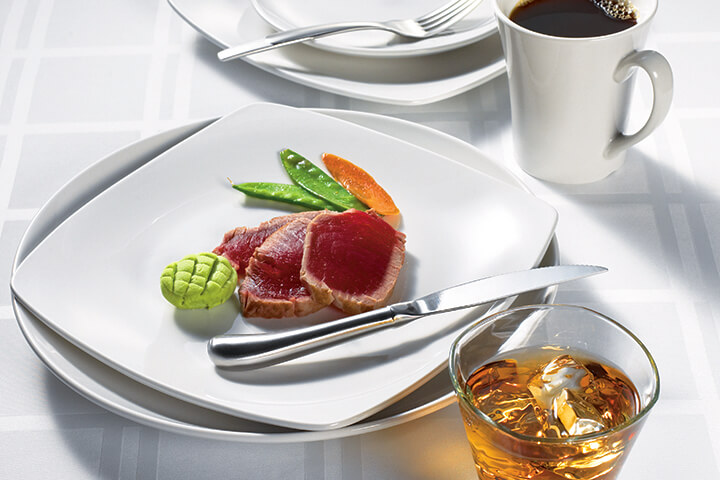
Square white plates offer versatility. They are a natural fit for restaurants serving modern or progressive cuisine, where presentation is a key element of the dining experience. The contemporary look of square plates create a minimalist canvas for showcasing food as art, especially when there is a focus on clean lines, geometric arrangements, and negative space.
The 90-degree angles of square plates can be used to create interesting food compositions. Food can be arranged diagonally or placed strategically at the corners to create a balanced presentation.
Square plates can be useful for portion control, particularly for appetizers or desserts. In contrast to round white plates which makes portions appear less substantial, the sharp corners of a square white plate makes it seem like there is more food on the plate than there actually is.
Rectangular White Plates
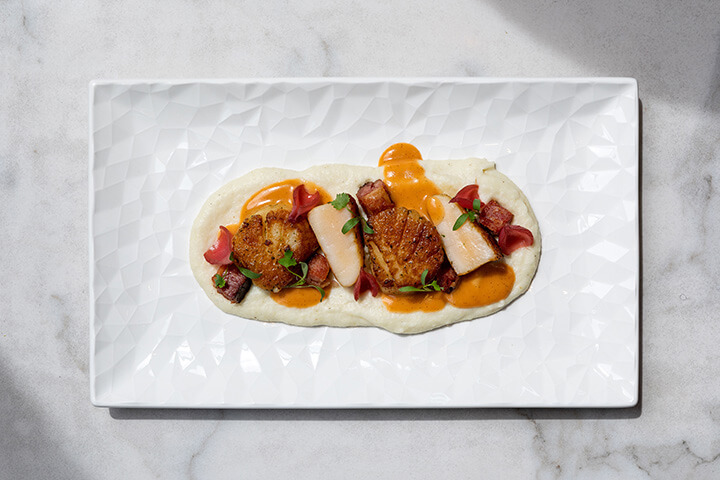
The clean lines and neutral color of white rectangular plates make them incredibly versatile for appetizers to main courses to desserts. Rectangular white plates conform to many different table setting aesthetics from modern minimalist to rustic farmhouse.
Compared to other shapes, they are particularly well-suited for presentations that rely on arranging elements across the length of the canvas, such as plated deserts. Appetizers also shine on rectangular white plates, lending each item a defined space.
Organic White Plates
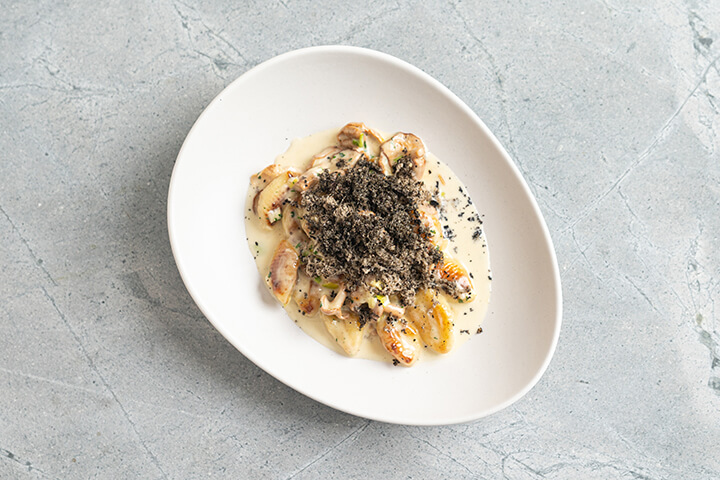
White plates with organic shapes evoke a sense of modernity and push the boundaries of conventional presentation which is particularly effective in settings aiming for a contemporary or upscale ambiance.
If your patrons appreciate modern design and innovative presentations, adding organically shaped white plates to the tablescape is a perfect fit. When paired with other shapes in a full table setting, they masterfully and effortlessly elevate simpler presentations by adding visual intrigue and balance.
Textured White Plates
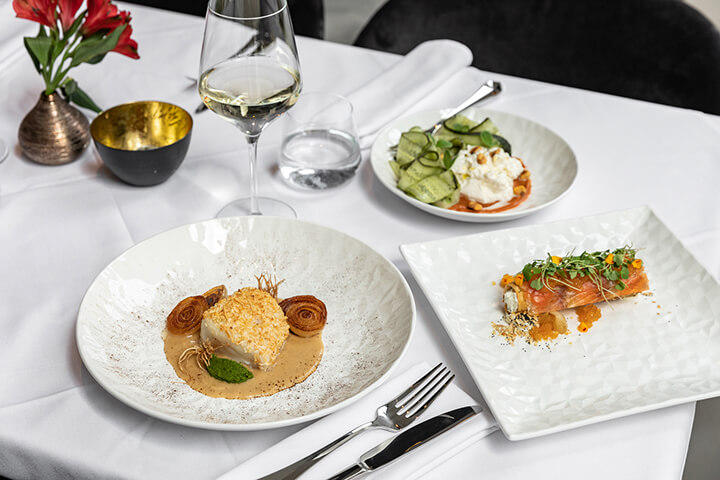
Visually, textured plates disrupt the monotony of a flat surface, creating a more interesting backdrop for the food. An aesthetically pleasing texture works particularly well with brightly colored or vibrantly arranged dishes. The texture provides a subtle contrast that helps the food “pop.” However, be mindful that the texture doesn’t overpower the presentation — it should complement the food, not compete with it.
Textured plates also add a sense of depth and dimension which is valuable for minimalist or monochromatic dishes. The play of light and shadow on the textured surface adds a little complexity, elevating the overall aesthetic.
Psychologically, studies suggest that textured plates can be associated with a perception of higher quality and value compared to smooth white plates. The textural variation on a commercial white dinner plate also triggers a subconscious association with handcrafted or artisanal elements, potentially enhancing the perceived authenticity of the dish.
The Versatility of White Plates
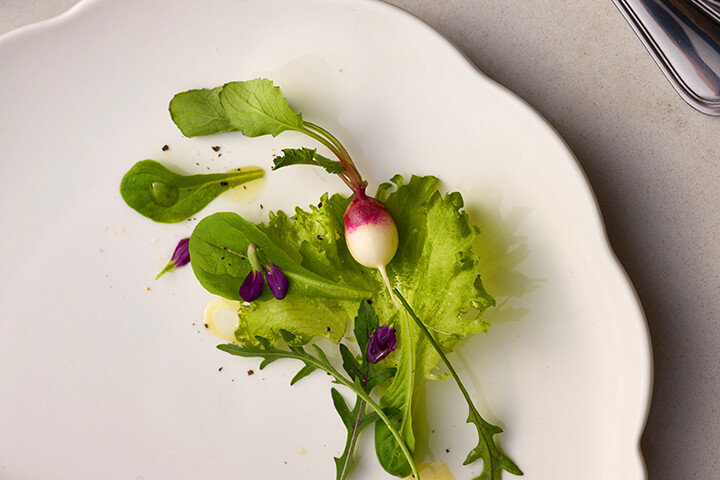
White plates go far beyond a simple backdrop for food. They play a surprising role in how we experience a meal, influencing our perception of color, texture, flavor, and even portion size. Are you a white plate aficionado or do you opt for color in your restaurant? Let us know in the comment section!
Partnered With 
Libbey is a reliable, long-term partner for your foodservice needs. Since 1818, it’s been our mission to provide the finest tableware for the makers of drinks, the makers of meals, and the makers of memories. We know what it means to put your heart and soul into everything you do, because we’ve been doing it for over 200 years.

